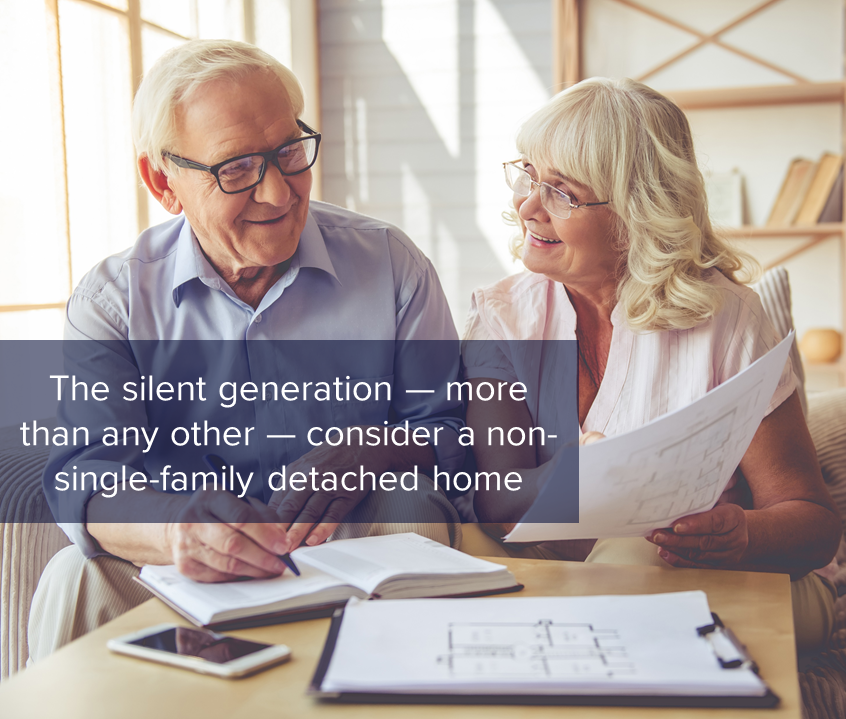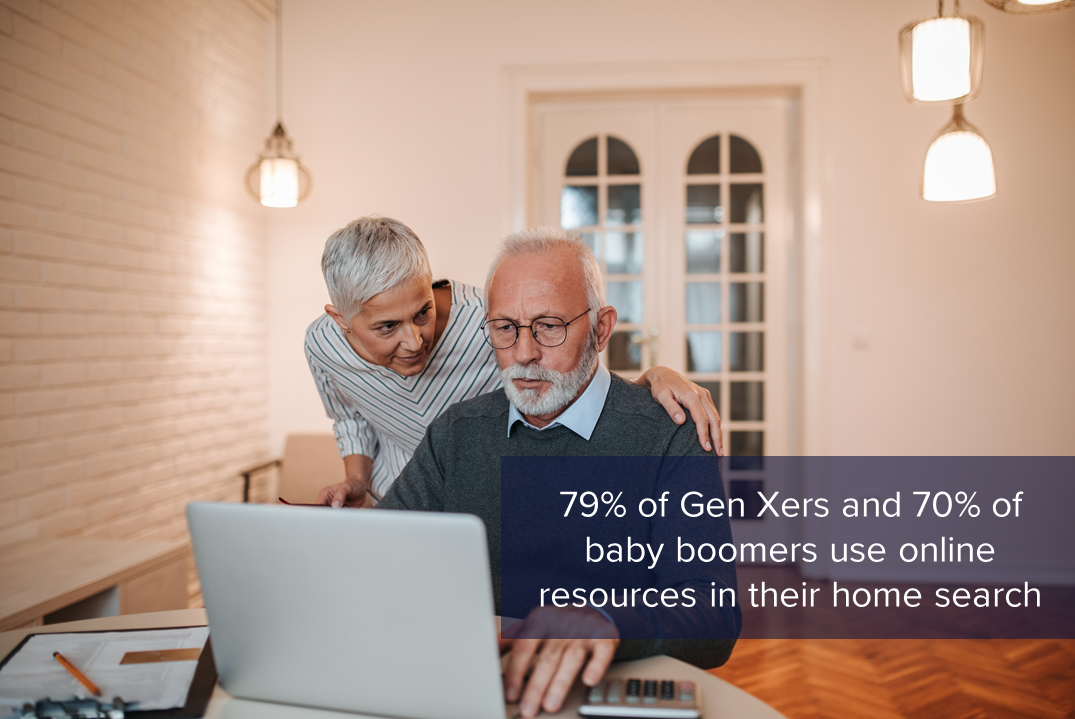Marketing Beyond Millennials - Part 1: The Buyer’s Search

May 1, 2018
4 Minute Read
While millennials (aged 18-37) make up more than a third of today’s new construction buyers (36 percent), older home buyers account for the vast majority. The Zillow Group Consumer Housing Trends Report 2017 reveals that new construction home buyers are more likely to be repeat buyers (67 percent versus 56 percent of buyers of existing homes).
Since repeat home buyers also tend to be older (median age of 48 versus median age of 32 for first-time home buyers), there is a sizable share of Gen Xers (aged 38-52, 30 percent), baby boomers (aged 53-72, 28 percent) and even members of the silent generation (aged 73+, 6 percent) who make up new construction home buyers. This means that the new construction buyer tends to be just a bit older than a buyer of an existing home (median age of 42 versus 40, respectively).
Here’s how to market beyond millennials and effectively reach these older buyers.
What they look for

A single-family detached house is the unquestioned top choice of property types considered among all generations of new construction buyers. Notably, 41 percent of silent generation buyers — more than any other generation — consider a non-single-family detached home, such as a townhouse or condo/co-op. These buyers are also significantly more interested in an age-restricted home or community: 30 percent of silent generation buyers versus 22 percent of baby boomers.
Of the older generations, Gen Xers are more likely to consider a new construction home (57 percent) than baby boomers (40 percent) and silent generation buyers (20 percent). And more than 1 in 4 Gen Xers (26 percent) considered a lot or land without an existing home on it.
How they search
The older the home buyer, the longer they take to search for their next home before buying. Millennials take an average of 15.5 weeks to search for their home, but this increases to almost 18 weeks for Gen Xers (17.8 weeks), 19 weeks for baby boomers (18.9 weeks) and more than five months for silent generation buyers (22.2 weeks).
While a majority of all buyers use online resources, reliance on them steadily decreases the older the buyer. However, use of real estate agents is similar across all generations. Far and away, an online resource like a website is the top choice of millennials (88 percent). Gen Xers also have an affinity for online resources (79 percent), as do baby boomers (70 percent). It’s also significant that slightly more than half of silent generation buyers (51 percent) use an online resource.
There’s a place for offline resources — particularly real estate agents — in your marketing budget as well. Older buyers learn of their home through real estate agents at higher rates:
- Silent generation: 45 percent
- Baby boomers: 22 percent
- Gen Xers: 18 percent
- Millennials: 15 percent
The takeaway: While millennials are most likely to use online resources, older buyers use them, too. However, older buyers are also most likely to use an offline resource to find their home.
A smart strategy should include a mix of online and offline resources.
Where they search
When asked which websites they used to search for a home, buyers named the Zillow Group sites most often (70 percent), with Gen Xers being most likely to indicate they visited a Zillow Group site (76 percent). Younger buyers are most likely to use social media during their search: 44 percent of millennials and almost one-third of Gen Xers (32 percent) use social media, which is double, or more, the share of baby boomers (16 percent) and silent generation buyers (11 percent) who look to Facebook or another social networking site.

And while millennials are still the biggest users of online resources, search engines are popular among all cohorts who went online, with 44 percent of millennials, 40 percent of Gen Xers, 35 percent of baby boomers and 32 percent of silent generation buyers using Google, Bing or another search engine.
While laptop and desktop computers are the top choice for all four generations who access resources online, they use a variety of platforms to get there: web, mobile web and apps. To access builder sites, most buyers use a laptop, but mobile is still important to them. Having a mobile-optimized site is critical for getting in front of these buyers.
Additionally, more than a third of new construction home buyers (34 percent) also consider a lot or land with no existing home on it, compared to only 26 percent of existing home buyers. This demonstrates how important it is to showcase your lots online and share all available inventory to consumers — they’re looking for it!
The takeaway: Diversify. Buyers move across platforms and devices, and their search doesn’t start and end with a smartphone. That’s why it’s important to be in front of them across all platforms — each has a time and a place.
Advertising on Zillow Group is an effective way to expose your inventory to a vast audience of buyers of all ages, on all platforms and devices: 38 percent of new construction buyers first learned of their home using online resources.
Continue reading our three-part series, Marketing Beyond Millennials:
Builders, meet buyers.
82 percent of prospective buyers consider new construction.* Make it easy for them to find you – list where they’re looking.
*Zillow New Construction Consumer Housing Trends Report 2025
Learn More